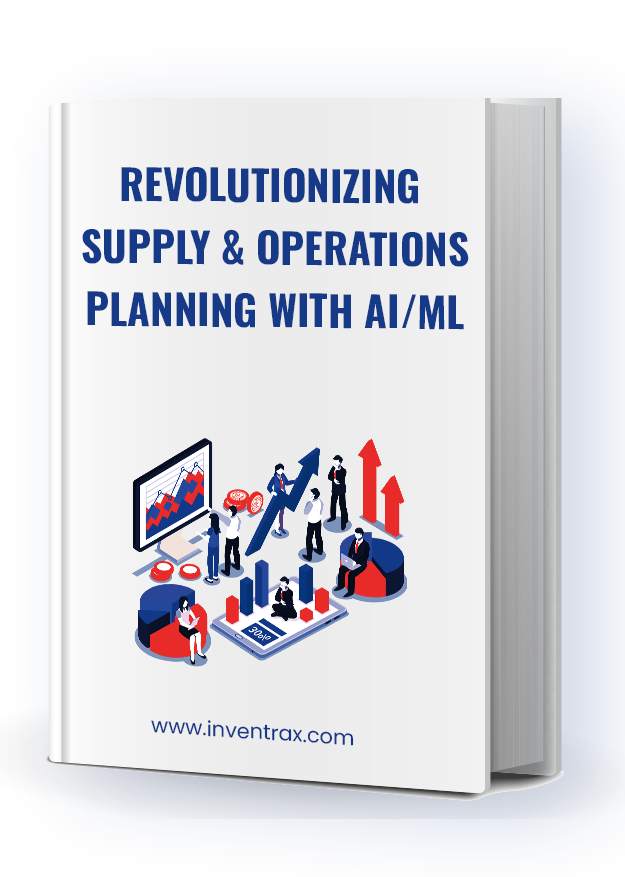Revolutionizing Supply & Operations Planning with AI/ML


OptiFlowAI is an advanced AI-powered demand forecasting solution designed to help businesses achieve higher accuracy, agility, and visibility in their planning processes. It leverages statistical models and machine learning algorithms to deliver reliable forecasts at SKU, zone, regional, and city levels on a weekly and monthly basis.
With real-time dashboards, scenario planning, and ABC–XYZ product classification, OptiFlowAI empowers planners and decision-makers to quickly adapt to changing demand patterns, optimize resources, and reduce forecasting errors.
Seamlessly integrated with ERP systems, OptiFlowAI ensures smooth data flow, secure access, and actionable insights—helping businesses move from reactive planning to proactive, data-driven decision-making.
Features
AI/ML Forecasting Engine
- OptiFlowAI combines AI/ML algorithms with classical time series models to deliver precise forecasts. The right model is
applied for each SKU or category, capturing seasonality, promotions, historical demand, and outliers. External factors such
as competitor moves or market shifts can also be considered, ensuring forecasts reflect genuine demand and improve
overall planning accuracy.
SKU-Level Forecasting (Weekly & Monthly Across Geographies)
- OptiFlowAI generates forecasts at the most granular SKU level, enabling planners to track demand across products,
categories, zones, regions, and cities. Forecasts are available on both weekly and monthly horizons, allowing teams to
balance short-term agility with long-term strategic planning.
Festival & Event Calendar
- OptiFlowAI includes a built-in calendar for major festivals and events. This feature helps planners anticipate demand surges
around occasions such as Diwali or Dussehra, capturing how sales typically shift before and during these periods. It ensures
forecasts are more practical, timely, and aligned with real market behavior.
What-if Analysis & Manual Adjustments
- Planners can make manual adjustments to forecasted data and save these adjustments as separate scenarios. Different
scenarios can be compared with the baseline forecast, helping planners evaluate alternatives and choose the most suitable
version for different business situations.
Business Controls & Governance
- To ensure trust in forecasts, OptiFlowAI provides manual overrides, workflow approvals, and audit trails. Planners can adjust
forecasts as needed, while managers retain oversight. Every change is logged, maintaining transparency and compliance
with governance standards.
Dashboards & KPI Monitoring
- Real-time dashboards provide clear visibility into demand trends, forecast accuracy, and key performance indicators.
Metrics such as MAPE, MAE, and RMSE are tracked alongside inventory coverage and demand variability. Drill-down
capabilities allow planners to analyze data at product, geography, or time-period levels, enabling faster corrective action.
ABC–XYZ Product Classification
- OptiFlowAI applies ABC–XYZ segmentation to categorize products based on demand value and variability. This allows
planners to focus resources on the most critical SKUs. High-value, stable-demand items (A–X) can be tightly monitored,
while lower-value, volatile-demand items (C–Z) can be managed with simpler models, balancing service levels and efficiency
Seamless ERP Integration
- OptiFlowAI connects directly with ERP systems to extract sales and procurement data through a robust pipeline. Forecast
outputs can be securely accessed through role-based permissions or exported into Excel, ensuring smooth adoption
without disrupting existing workflows.
DIGITAL TRANSFORMATION
Leverage your IT with our Operartional Technology (OT) convergence platform.
Benefits of OptiFlowAI
Improved Forecast Accuracy
Reduce forecasting errors and avoid stockouts or overstock situations.
Enhanced Decision Making
Leverage predictive analytics to make proactive, data-driven business decisions.
Operational Efficiency
Streamline supply chain operations, optimize inventory, and improve resource allocation.
Cost Savings
Lower carrying costs, minimize wastage, and improve cash flow management.
Scalability and Flexibility
Adaptable to growing business needs and various industry-specific forecasting challenges.
Inventory Visibility
A centralized global view of warehouse inventory allows managers to view the movement of their inventory and ascertain the accuracy of all inbound activity, inventory on hand, and outbound shipments across all facilities in real time.
